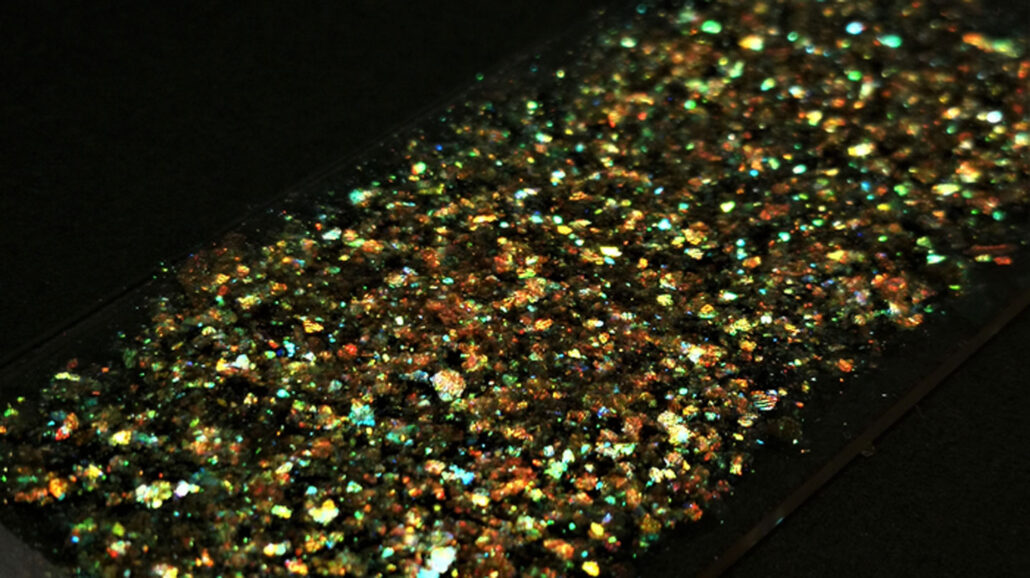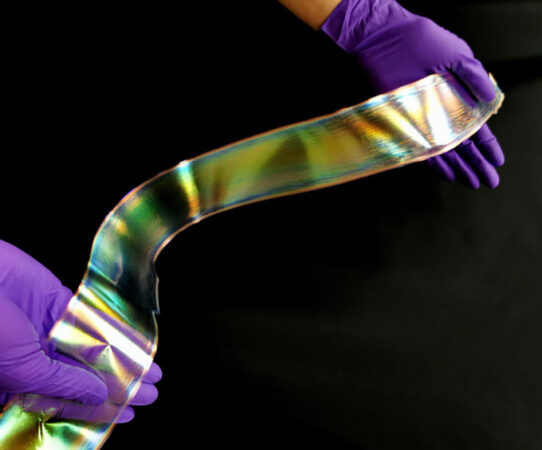biodegradable: Adjective for something that is able to break down into simpler materials, based on the activity of microbes. This usually occurs in the presence of water, sunlight or other conditions that help nurture those organisms.
cellulose: A type of fiber found in plant cell walls. It is formed by chains of glucose molecules.
environment: The sum of all of the things that exist around some organism or the process and the condition those things create. Environment may refer to the weather and ecosystem in which some animal lives, or, perhaps, the temperature and humidity (or even the placement of things in the vicinity of an item of interest).
fiber: Something whose shape resembles a thread or filament.
green: (in chemistry and environmental science) An adjective to describe products and processes that will pose little or no harm to living things or the environment.
iridescent: Adjective that describes something that seems to change color with a shift in the angle at which it is viewed or at which lighting is applied.
microplastic: A small piece of plastic, 5 millimeters (0.2 inch) or smaller in size. Microplastics may have been produced at that small size, or their size may be the result of the breakdown of water bottles, plastic bags or other things that started out larger.
pigment: A material, like the natural colorings in skin, that alter the light reflected off of an object or transmitted through it. The overall color of a pigment typically depends on which wavelengths of visible light it absorbs and which ones it reflects. For example, a red pigment tends to reflect red wavelengths of light very well and typically absorbs other colors. Pigment also is the term for chemicals that manufacturers use to tint paint.
plastic: Any of a series of materials that are easily deformable; or generally synthetic materials that have been made from polymers (long strings of some building-block molecule) that tend to be lightweight, inexpensive and resistant to degradation.
pulp: The fibrous inner part of a vegetable or fruit (such as an orange).
rainbow: An arc of color displayed across the sky during or just after a rain. It’s caused when water droplets in the atmosphere bend (or diffract) white sunlight into a number of its component hues: usually red, orange, yellow, green, blue, indigo and violet.
textile: Cloth or fabric that can be woven of nonwoven (such as when fibers are pressed and bonded together).
toxic: Poisonous or able to harm or kill cells, tissues or whole organisms. The measure of risk posed by such a poison is its toxicity.
wavelength: The distance between one peak and the next in a series of waves, or the distance between one trough and the next. It’s also one of the “yardsticks” used to measure radiation. Visible light — which, like all electromagnetic radiation, travels in waves — includes wavelengths between about 380 nanometers (violet) and about 740 nanometers (red). Radiation with wavelengths shorter than visible light includes gamma rays, X-rays and ultraviolet light. Longer-wavelength radiation includes infrared light, microwaves and radio waves.









